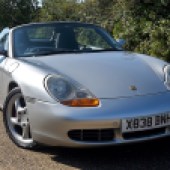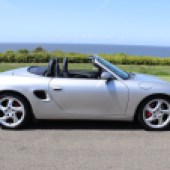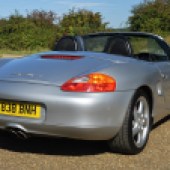Is an automatic Porsche Boxster S the spoilt experience some purists think it is? We get behind the wheel to find out
Words and images: Jon Burgess
Developed side-by-side with the new 996-model 911, the 986 Boxster was a runaway success for Porsche when the firm was at death’s door. It accrued mounting losses owing to major markets slipping into recession in the early 1990s; the millions lost developing the four-door, V8-engined 989 added to the wounds.
The firm needed an entry-level model to revive its fortunes; cheaper cars had done much for Porsche’s bottom line in the past – the four-cylinder 912, mid-engined 914 and transaxle 924 had sold in great numbers without besmirching the marque, leaving the darling 911 in the clear.
But funds were tight. An all-new, water-cooled engine range was needed for the new 911 to meet emissions regulations, and to pay for it, the 996 would share parts with the production version of the 986 Boxster, first seen as a concept car at the 1993 North American International Auto Show. Toyota showed Porsche how to ruthlessly pare back costs on the line, and while purists derided the Boxster and 996 for their shared parentage, it kept the firm afloat.
1996 saw the first 2.5-litre cars emerge, powered by smaller capacity, detuned variants of the water-cooled M96 flat-six designed for the 911. From the A-pillar aft, the cars differed – and as time went on, 2.7-litre (220bhp) and 3.2-litre (260bhp) S variants of the Boxster edged ever closer to the 911 in performance. A small facelift in 2002 tweaked the 986 formula further, ready for the 987 Boxster and Cayman to take the reins in 2004. Divisive though it may have been, the Boxster saved Porsche.
The whining has already started, I can tell. Certain people regard a Tiptronic Porsche as the lowest form of life: desperate machines for poorer people who value the badge over the driving experience. Granted, the first-generation Boxster – codenamed 986 – was never going to have it easy with hardcore enthusiasts; to then saddle the fastest 3.2-litre model with a five-speed automatic gearbox merely added insult to injury in the eyes of many.
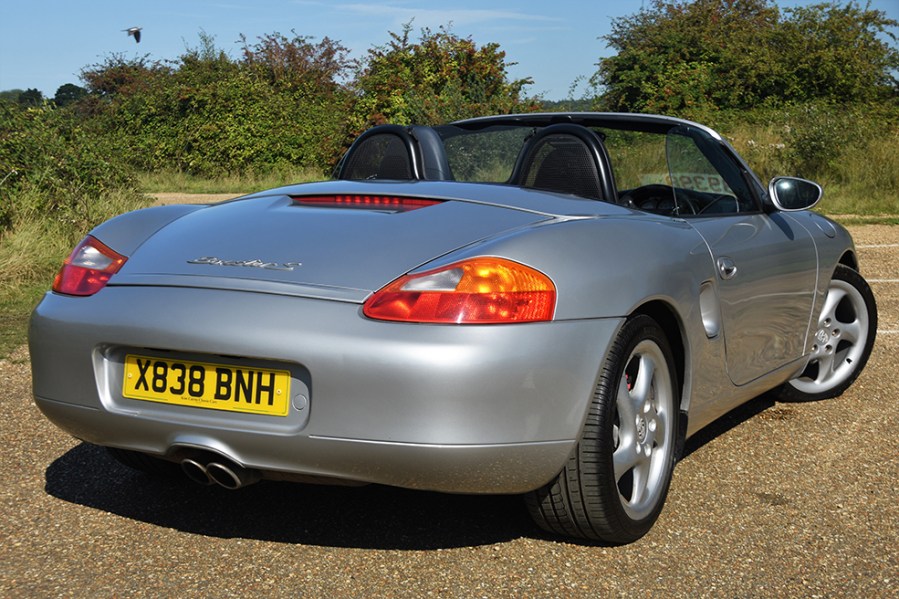
However, not everyone who bought a Boxster wanted one purely for the romanticised B-road blast. Like the 911, these were capable everyday machines, happy to sit in traffic or be used come rain, snow or shine, with surprisingly practical boot space. The automatic allowed owners to stick the Tiptronic in ‘Drive’ during the week, and slap it into manual should they fancy more excitement come the weekend. You see, cabriolets aren’t just about nailing apexes on a twisting road – by sheer dint of their tops folding down, one gets the weather along for the ride, too. The Boxster was for everyone, and with prices the way they are currently, more people than ever can get behind the wheel.
Kim Cairns’ Boxster S has been in stock before; sold previously by the firm in 2015, it’s now back on the books. With just short of 69,000 miles on the odometer (68,790 recorded when we visited), it’s done fewer miles than most similarly aged cars, with barely any issues to show for it, bar a tiny mark on the retractable spoiler and a slightly cloudy plastic rear hood window (the hood itself is rip-free). The tyres are the correctly sized staggered items – Continentals from 2020 up front with 2017 Pirellis at the rear.
Boxster interiors were never the hardest wearing of cabins, but there’s very little to worry about inside this particular example. The leather on the driver’s side seat bolsters is just beginning to wear – the steering wheel a similar story – and there are a few scratches on the centre console and kick plates. Otherwise, everything else is as Porsche intended, right down to the Becker head unit and air-conditioning.
Supplied new to a Porsche Centre in Switzerland, it came straight to the UK after dispatch, spending the first 10 years of its life in Exeter, serviced (bar one exception) at Porsche Centre Exeter on the correct intervals. Specialists Andrew Toms Car Sales, Kim Cairns, and PMW then carried on looking after this Boxster, with brake fluid changes in 2002, 2004, 2006, 2008, 2016, 2018 and 2020. Corrosion guarantee inspections were also carried out on schedule, as well as airbag checks.
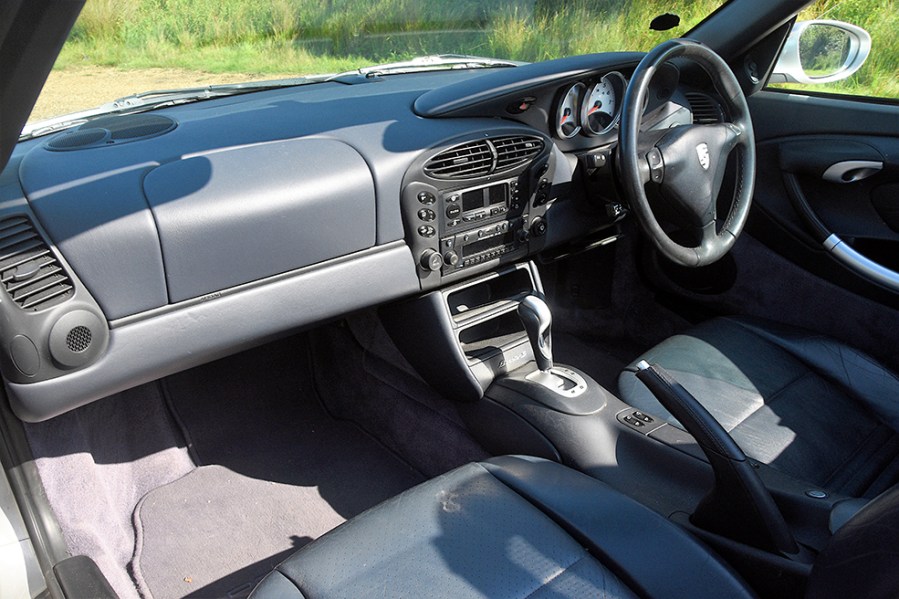
Boxsters were never the hardest of cars to drive and this one is no exception. It takes a minute to get used to the large, offset brake pedal, but that is the end of the inconveniences. There’s perhaps more scuttle shake than you might be expecting, but there’s little to do other than hold on and steer; in ‘D’ the five-speed Tiptronic shifts firmly and on cue, with no baulks, flaring, or slippage.
Tapping either one of the steering wheel shift buttons switches the ‘box into manual mode without moving the gear lever, and for the age of the car, it is surprisingly responsive, reverting back to automatic duties if the buttons are left alone.
Bar the slight performance penalty conferred on the car from the Tiptronic transmission, the Porsche drives like a standard Boxster S – responsive steering, powerful, lightly assisted brakes, and more than enough grunt to stay with traffic.
Priced perilously close to a 996 generation Porsche 911, this is a Boxster with a lot of life left in it. All its new owner would need to do is keep up the maintenance. While some might miss a six-speed manual gearbox, the Tiptronic makes even easier work of daily driving. As an ‘S’, it’s unlikely to depreciate, either.


